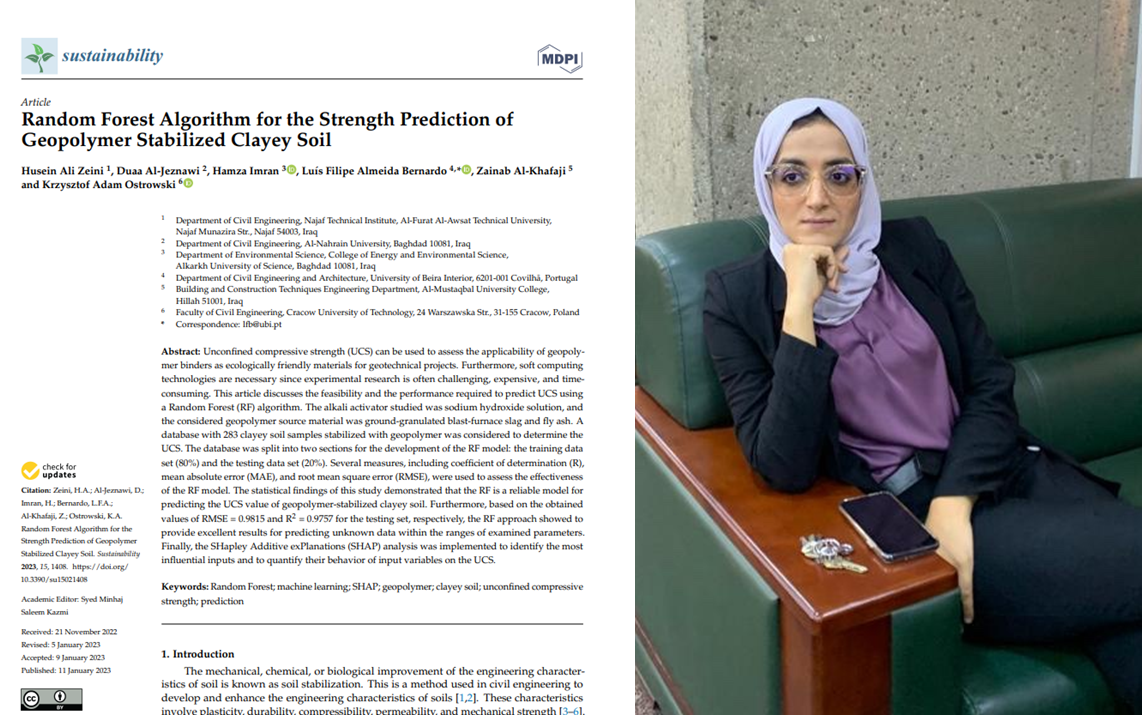تدريسية في قسم الهندسة المدنية تنشر بحثا في مجلة عالمية رصينة
عدد الزيارات: 31967404 مشاهدة
بواسطة: قسم الهندسة المدنية
تاريخ النشر: 2023-05-30
اخر تصفح: 2025-11-19

نشرت التدريسية في قسم
الهندسة المدنية المدرس دعاء فالح بحثا علميا متميزا في مجلة Sustainability والمفهرسة ضمن مستوعبات سكوبس وكلاريفيت بمعمل تأثير مقداره 5.0 و
3.8 على التوالي تحت عنوان" Random Forest Algorithm for the Strength Prediction of
Geopolymer Stabilized Clayey Soil ، يأتي ذلك ضمن النشاط البحثي المتميز لتدريسيي
قسم الهندسة المدنية والنشر في المستوعبات العالمية الرصينة ملخص البحث: Unconfined compressive strength (UCS) can be used to assess the
applicability of geopolymer binders as ecologically friendly materials for
geotechnical projects. Furthermore, soft computing technologies are necessary
since experimental research is often challenging, expensive, and
time-consuming. This article discusses the feasibility and the performance
required to predict UCS using a Random Forest (RF) algorithm. The alkali
activator studied was sodium hydroxide solution, and the considered geopolymer
source material was ground-granulated blast-furnace slag and fly ash. A
database with 283 clayey soil samples stabilized with geopolymer was considered
to determine the UCS. The database was split into two sections for the
development of the RF model: the training data set (80%) and the testing data
set (20%). Several measures, including coefficient of determination (R), mean
absolute error (MAE), and root mean square error (RMSE), were used to assess
the effectiveness of the RF model. The statistical findings of this study
demonstrated that the RF is a reliable model for predicting the UCS value of
geopolymer-stabilized clayey soil. Furthermore, based on the obtained values of
RMSE = 0.9815 and R2 = 0.9757 for the testing set, respectively, the RF
approach showed to provide excellent results for predicting unknown data within
the ranges of examined parameters. Finally, the SHapley Additive exPlanations
(SHAP) analysis was implemented to identify the most influential inputs and to
quantify their behavior of input variables on the UCS.
